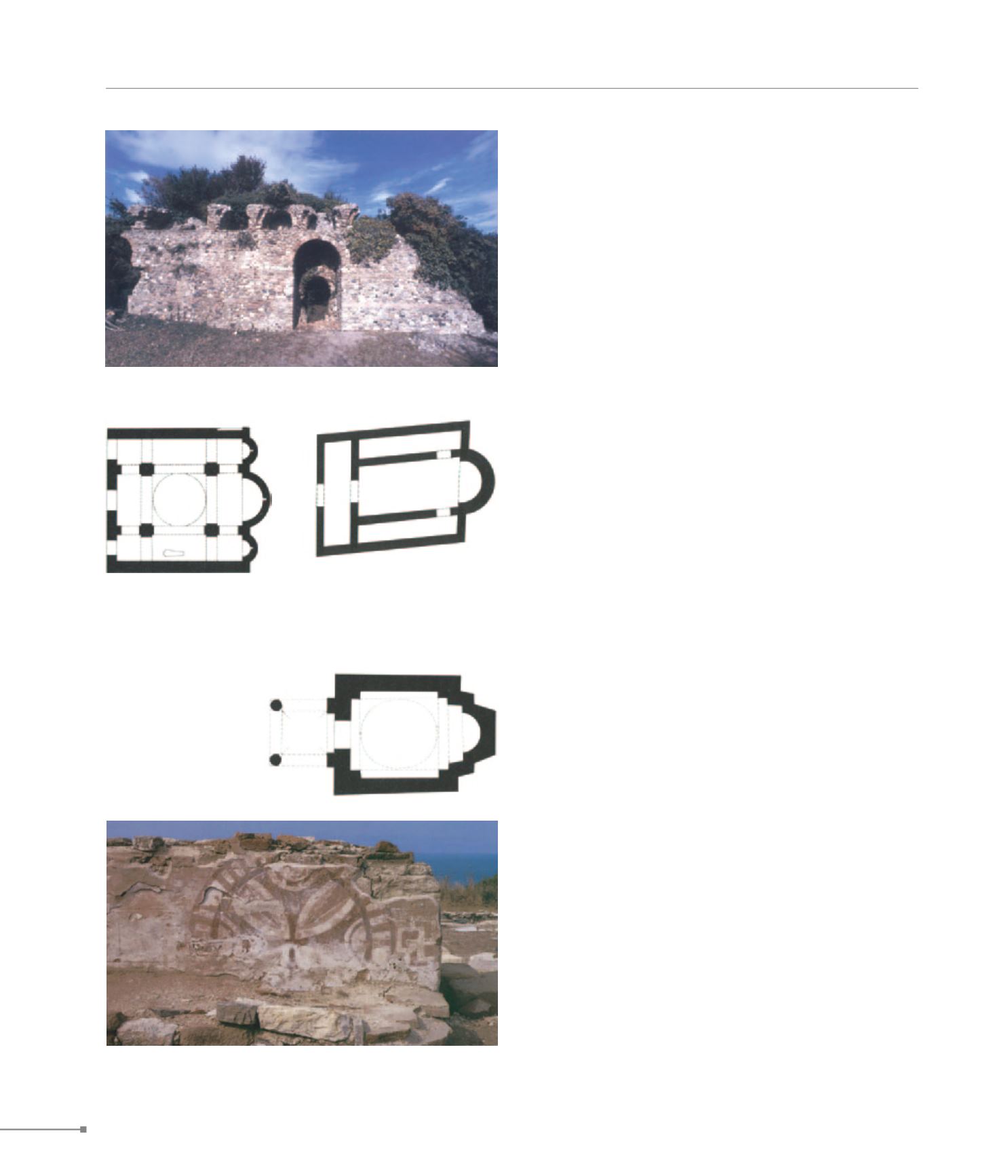
Porto Lagos. Poroi (?).
Paralia Avdiron. Polystylon.
THRACE
92
22.
Porto Lagos
.
Poroi (?)
.
An Early Christian settlement was founded at the site of Porto
Lagos, probably identifying with the fortress of Poroi that had
been a see since the 9th-10th c. On the coast, an almost square
defensive wall has been excavated along with square towers.
At its SW end, remains of a cross-in-square church of the 10th
c. are preserved. Occasional burials have been located at the
site. Findings within the walls, from the islet of Aghios Nikolaos,
as well as from the islet of Bourou (where there are fishing fa-
cilities) include a Mid-Byzantine molybdobull of the bishop of
Poroi, metal objects, architectural members and pottery.
23.
Paralia Avdiron
.
Polystylon.
The medieval town of Polystylon was formed on a small hill
where the classic citadel of Abdera had been situated at the
coastal end of modern Paralia Avdiron. It was a see under
the metropolis of Philippi from the 9th c., before which it was
renamed. In the 14th c. it was annexed to the ruler of Maron-
eia. At the time the military character of the settlement (for-
tress-polichnion) prevailed. The city was structured in three
sections: lower town, mid-town, citadel with a donjon. In the
sections that have been investigated, the Byzantine wall was
found to have been built on the ancient fortifications of Ab-
dera. The towers are quadrilateral, the outer face of the wall
was reinforced in parts with a subsequent “jacket” and a bul-
wark of unknown length protected it. The city walls had been
constructed earlier than the 11th c. The entire Byzantine cita-
del or part of it had been repaired under John VI Cantacuze-
nus. Adjacent to the W wall is the bath of the settlement, built
in the 4th or 5th c. In the upper part of the city the episcopal
church has been revealed, a large, three-aisled basilica pos-
sibly with transept, narthex and gallery, dating to the 9th or
10th c., with alterations of the 11th or 12th c. It operated until
the 14th c.: after its destruction, a cemetery developed around
the church, and makeshift lodgings were erected on the ruins
of the narthex. The episcopal church of Polystylon was built
upon an earlier, possibly Early Christian three-aisled basilica,
of which the octagonal baptistery with a constructed cross-
shaped font is preserved. The baptistery was used as such in
the first years’ functioning of the Byzantine church, but later
on it was converted into an auxiliary space. In the lower part
of the city a cross-in-square church of the contracted type was
excavated; it is possibly of the 12th c. and was in use until
the 15th c. A cemetery was installed around the church in the
years of its operation. On the plain N of the Byzantine city
a three-aisled, timber-roofed basilica with narthex has been
excavated in the middle of a Byzantine cemetery. In its later
phases, the church was initially restricted to the main aisle,
then a smaller, aisleless church was built and lastly a small
chapel was founded in the NE corner of the basilica. The ear-
lier basilica has been traced back to the period between Late
Antiquity and the 9th c. The cemetery, dating from almost the
23. Paralia Avdiron, basilica N of the
Byzantine city, ground plan (Παραλία
Αβδήρων, βασιλική βορείως του
βυζαντινού οικισμού, κάτοψη)
23. Paralia Avdiron, cross-in-
square church at the lower
city, ground plan (Παραλία
Αβδήρων, σταυροειδής ναός
στην κάτω πόλη, κάτοψη)
23. Polystylon, episcopal church, mural painting (Πολύστυλον,
επισκοπικός ναός, τοιχογραφία)
21. Anastasioupolis, walls (Αναστασιούπολις, τείχος)
22. Porto Lagos, cross-in-
square church, ground plan
(Πόρτο Λάγος, σταυροειδής
ναός, κάτοψη)


